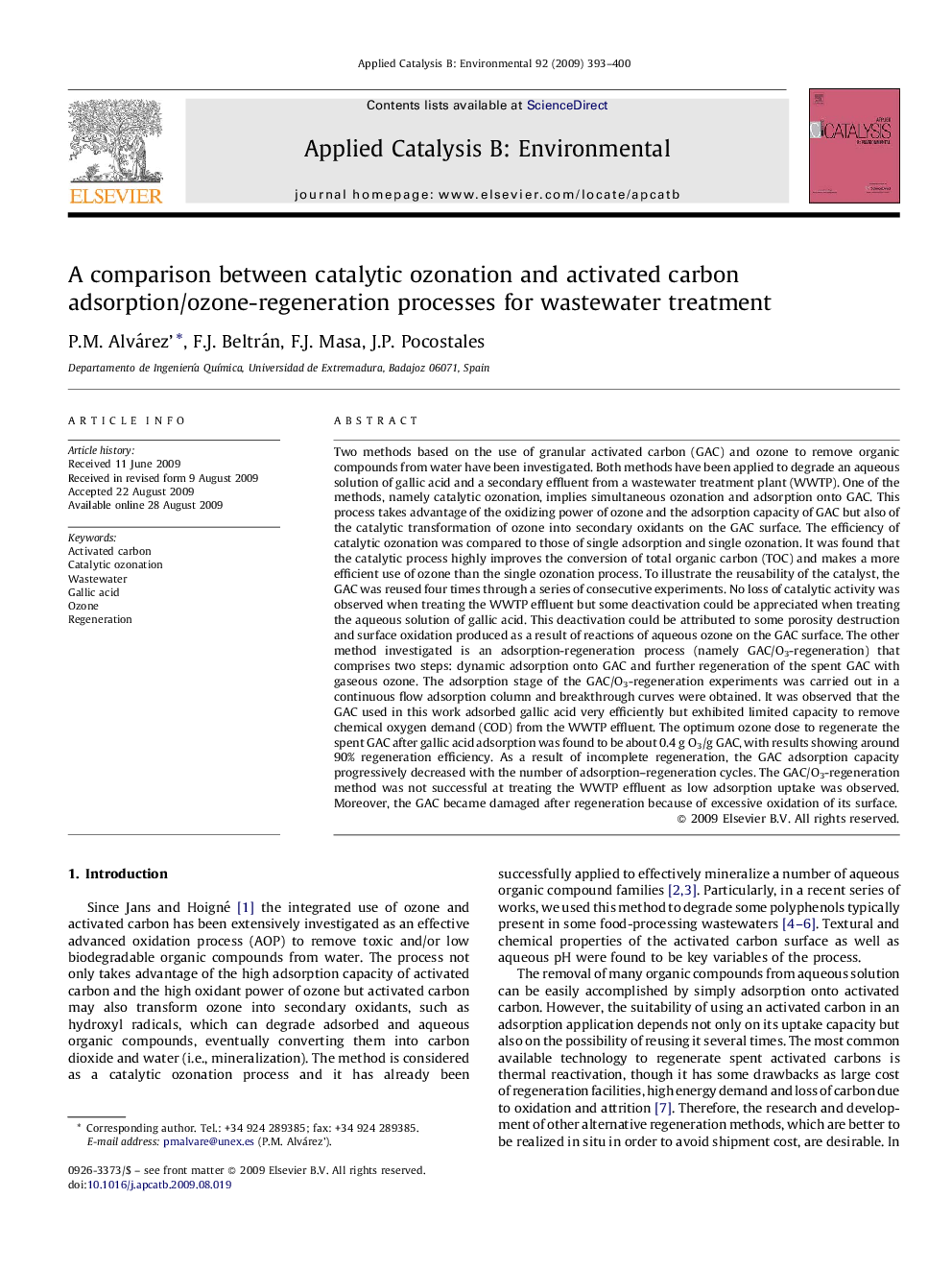| کد مقاله | کد نشریه | سال انتشار | مقاله انگلیسی | نسخه تمام متن |
|---|---|---|---|---|
| 47577 | 46476 | 2009 | 8 صفحه PDF | دانلود رایگان |

Two methods based on the use of granular activated carbon (GAC) and ozone to remove organic compounds from water have been investigated. Both methods have been applied to degrade an aqueous solution of gallic acid and a secondary effluent from a wastewater treatment plant (WWTP). One of the methods, namely catalytic ozonation, implies simultaneous ozonation and adsorption onto GAC. This process takes advantage of the oxidizing power of ozone and the adsorption capacity of GAC but also of the catalytic transformation of ozone into secondary oxidants on the GAC surface. The efficiency of catalytic ozonation was compared to those of single adsorption and single ozonation. It was found that the catalytic process highly improves the conversion of total organic carbon (TOC) and makes a more efficient use of ozone than the single ozonation process. To illustrate the reusability of the catalyst, the GAC was reused four times through a series of consecutive experiments. No loss of catalytic activity was observed when treating the WWTP effluent but some deactivation could be appreciated when treating the aqueous solution of gallic acid. This deactivation could be attributed to some porosity destruction and surface oxidation produced as a result of reactions of aqueous ozone on the GAC surface. The other method investigated is an adsorption-regeneration process (namely GAC/O3-regeneration) that comprises two steps: dynamic adsorption onto GAC and further regeneration of the spent GAC with gaseous ozone. The adsorption stage of the GAC/O3-regeneration experiments was carried out in a continuous flow adsorption column and breakthrough curves were obtained. It was observed that the GAC used in this work adsorbed gallic acid very efficiently but exhibited limited capacity to remove chemical oxygen demand (COD) from the WWTP effluent. The optimum ozone dose to regenerate the spent GAC after gallic acid adsorption was found to be about 0.4 g O3/g GAC, with results showing around 90% regeneration efficiency. As a result of incomplete regeneration, the GAC adsorption capacity progressively decreased with the number of adsorption–regeneration cycles. The GAC/O3-regeneration method was not successful at treating the WWTP effluent as low adsorption uptake was observed. Moreover, the GAC became damaged after regeneration because of excessive oxidation of its surface.
Journal: Applied Catalysis B: Environmental - Volume 92, Issues 3–4, 9 November 2009, Pages 393–400